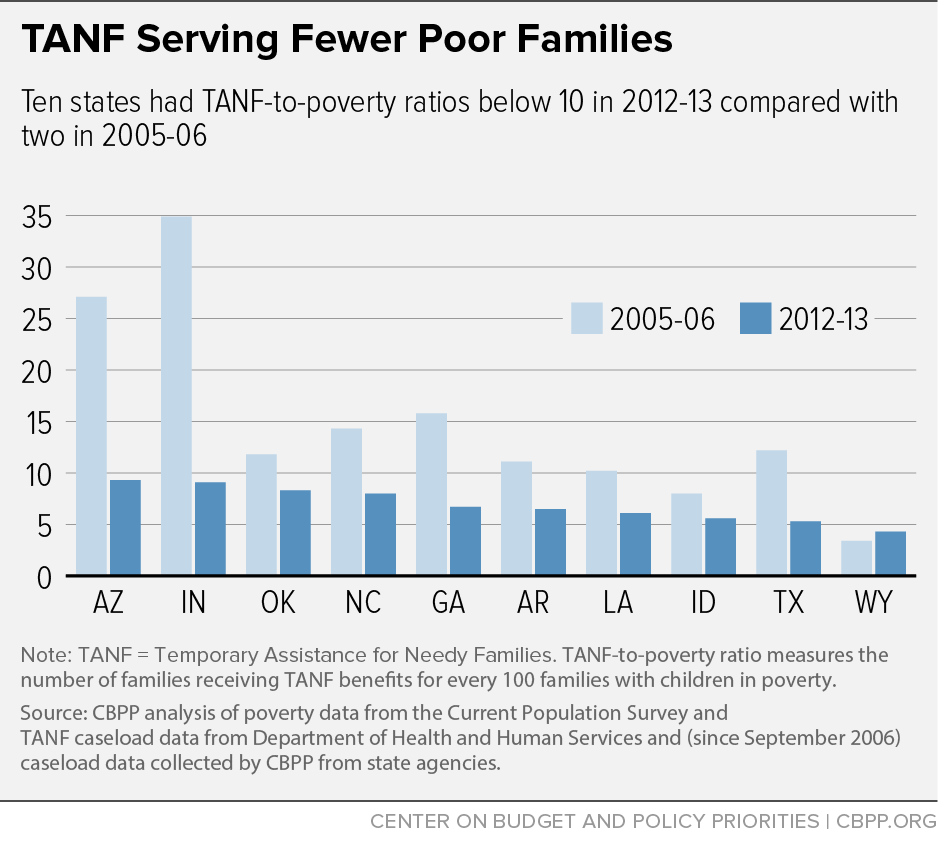más allá de los números
States Have Weakened the TANF Safety Net
As two House subcommittees prepare to hold a hearing later this week on work and the safety net, policymakers should remember that states have weakened the Temporary Assistance for Needy Families (TANF) program.
Nationwide, for every 100 families in poverty, just 26 families received TANF cash assistance in 2013. That’s down from 68 such families when President Clinton and Congress created TANF in 1996 to replace the Aid to Families with Dependent Children (AFDC) program, as I explained last week.
But that figure tells only part of the story. This ratio — which we call the TANF-to-poverty ratio (TPR) — varies widely among states, ranging from a low of 4 in Wyoming to a high of 66 in California. In ten states, the ratio is less than 10, meaning that for every 100 families living in poverty, fewer than 10 receive TANF cash assistance (see chart).
Using their legal flexibility, states have made policy, process, and budgetary decisions that have substantially weakened TANF’s role as a safety net — even as many families’ need for cash assistance rose during and after the recession. In December 2013, 32 states’ TANF caseloads were below their December 2006 levels.
Some states shortened or otherwise changed their time limits. Others made administrative changes such as more stringent applicant requirements that made it harder for families to qualify for benefits. In some instances, states made these changes to free up funds to fill budget holes, while others made them for ideological reasons.
Consider just two examples:
- Arizona has cut TANF benefit time limits three times since 2006. In 2010, it cut the time limit from 60 to 36 months, terminated many child-only cases by factoring in the income of relatives caring for children (even when these relatives weren’t seeking assistance for themselves), and instituted time limits on these child-only cases. It dropped the time limit further in 2011, to 24 months. It enacted a third cut this year, which will drop the lifetime limit to 12 months effective in July 2016. Arizona’s TANF caseload fell 61 percent between December 2006 and December 2013.
- Indiana has changed its policies and procedures around work requirements, including requiring applicants to complete 20 days of job searching before the state will approve benefits. Indiana’s caseload plummeted after these changes and was 73 percent lower in December 2013 than in December 2006.
Many states’ changes to their TANF programs have left more families deeply poor and without the resources to meet their most basic needs through either employment or cash assistance. TANF’s track record shows that state flexibility hasn’t measurably improved the lives of poor families and has left the most vulnerable families worse off.

